You are using an out of date browser. It may not display this or other websites correctly.
You should upgrade or use an alternative browser.
You should upgrade or use an alternative browser.
Russian Military News, Reports, Data, etc.
- Thread starter tphuang
- Start date
In case anyone wants an explanation.
This table lists the maximum detection range of an enemy sub depending on the difference in noise level (in dB) between the target and the passive sonar. It's based on the sonar equation for passive sonar - the source (enemy sub) has to be louder than you by the value in the table (+x dB) and this will give you the maximum range at which you can hear the noise in ideal conditions at sea. Depending on other factors you can hear the enemy sub at a closer distance but not at a greater distance than the one given in the table because acoustic waves won't propagate in water sufficiently for your sensor to pick them up.
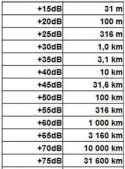
This next table lists the average approximate noise levels of subs - you have to add 100dB to each value in the table (17dB for Severodvinsk is 117dB)
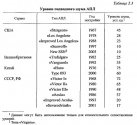
This means that without accounting for sonar gain during the Cold War a Los Angeles sub generating 128dB of noise could hear a Victor II sub generating 165dB of noise at a maximum distance of around 5km. Add a very modest sonar gain of 10dB for the towed array and the distance increases to some 50km. At the same time Victor II can't hear the Los Angeles sub at all because of its own noise level. The kind of one-sided advantage that US submarines held over Soviet subs is not matched by anything during the Cold War era.
Today a Virginia sub (New SSN in the table) generating 110dB of noise will hear a Yasen sub (Severodvinsk in the table) generating 117dB of noise at a maximum distance of somewhere around 50 meters. If we add the same 10dB gain the distance increases to some 500m. With 20dB gain it is 5km. At the same time due to how towed arrays work and thanks to modern processing technology it is possible for Severodvinsk to hear Virginia as long as the sonar gain of its towed array negates that 17dB difference of base noise level. It has to be significantly more though to detect it at sufficient range.
I can't remember the formula now but I think modern towed arrays or sufficiently large conformal arrays can have a theoretical gain of 30-40dB so the maximum detection ranges increase accordingly but obviously the same is true for your opponent. The key here is to hear the enemy before it hears you. The Americans have an advantage but the advantage is no longer sufficient to provide for full comfort of operations.
The reason why it worries USN commanders is that at the end of the Cold War the USN had Los Angeles subs in service and the Improved Los Angeles (San Juan or 688i) was in the process of replacing the Sturgeons. Russian on the other hand only in the late 80s introduced the Akula class (Project 971) which was somewhat comparable to the Los Angeles subs and the first Soviet/Russian sub that was better than the old Sturgeon. Better in this context means "having lower base noise level". Improved Akulas which were better than both 688's and 688i's went into service after the dissolution of the USSR and there were only two of those subs - one Project 971U and one Project 917M.
This means that at the beginning of the 2000s while the USN had altogether 62 Los Angeles and San Juan subs and 3 Seawolfs with the Virginias already in production Russia would have only about 12 Akulas of which only two were better than all US subs except the Seawolf.
With nine Yasen-class subs in production this is going to change because seven of those ships are supposed to enter service by 2024 and then two-three more by 2027-28. That will give Russians between nine and twelve subs which are within 10dB range of the Virginias apart from the new Khabarovsk class which will carry the supertorpedo and might be used for offensive operations. Still an advantage but far from the kind that USN got used to.
The main problem is obviously China which currently is not a threat due to low number of Type 09IIIs and their noise level (see table) but the Huludao shipyard has sufficient capacity to produce at minimum 2 SSNs per year which for China means a minimum rate of net SSN force growth of 20 per decade. While US shipbuilding is currently clogged with 2 Virginias per year taking half of the shipbuilding budget. So it's not just that Russian ships are catching up but that numbers are no longer to be an advantage in early 2030s as projected Chinese and Russian fleets combined will be too close to the size of USN submarine force. Any increase in Chinese SSN production and they'll match USN by 2040.
The question obviously is what the USN is going to do about it because quieter subs are not a solution. They can be as quiet as to bump into each other like the British and French SSBNs did recently. The question is how you find them and that's a separate and complex issue that I won't get into here. But hopefully you have an understanding of the article that most likely even the article's author doesn't have. That tends to be the ironic reality of people writing for money on subjects that they know very little about.
The Dutch also got a dossage of flybys after trying to pull the same BS as the brits around crimea, this time it included a Su-30SM with pair of Kh-31's underneath.
Russia supposedly started dry dock assembly of modules for the Leader class nuclear icebreaker.
Displacement: 50398 t (standard) / 71380 t (design waterline)
Dimensions: Length 209.2 m, Width 47.7 m, Height 18.9 m, Draft 11.5 m (minimum) / 13.0 m (full)
Two RITM-400 nuclear reactors. 315 MWt each, 120 MWe each.
This power plant was also proposed to be used in the "Storm" aircraft carrier proposal.
Assembly is being done at the Zvezda shipyard in the Pacific.
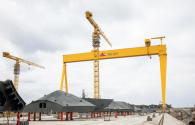
Displacement: 50398 t (standard) / 71380 t (design waterline)
Dimensions: Length 209.2 m, Width 47.7 m, Height 18.9 m, Draft 11.5 m (minimum) / 13.0 m (full)
Two RITM-400 nuclear reactors. 315 MWt each, 120 MWe each.
This power plant was also proposed to be used in the "Storm" aircraft carrier proposal.
Assembly is being done at the Zvezda shipyard in the Pacific.

Last edited:
Ministry of Defense: the capabilities of the S-500 are unique, there are simply no analogues
07.07.2021The system has passed a number of tests with combat launches against air targets. All tests that have been carried out have been completed successfully.
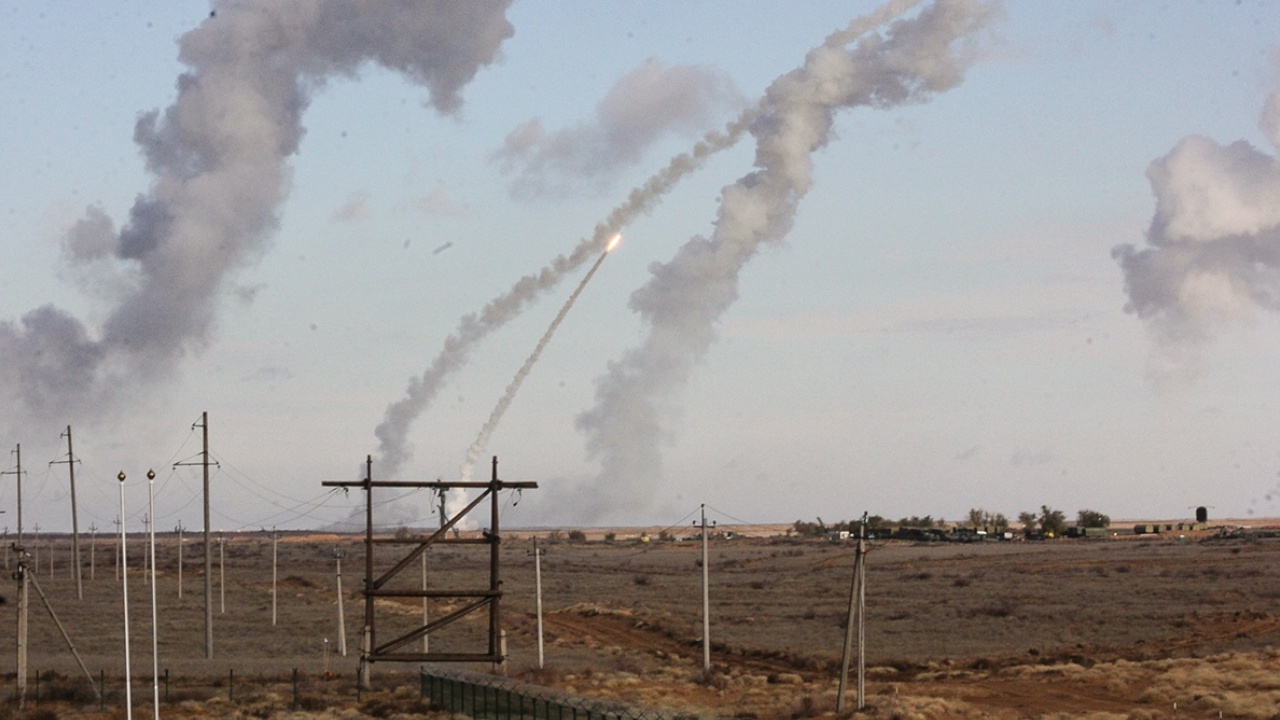
The Ministry of Defense told about the uniqueness of the S-500 Prometheus anti-aircraft missile system.
"The characteristics laid down in the S-500 air defense system, which make it possible to destroy, in addition to aerodynamic and ballistic targets, hypersonic weapons of all modifications, including in near space, make it possible to say with confidence that there are simply no analogues of this system," he said in an interview with Krasnaya Zvezda, Major General Sergei Babakov, Chief of the Anti-Aircraft Missile Forces of the Aerospace Forces.
Babakov added that the system has passed a series of tests with launches at air targets. All tests that have been carried out have been completed successfully.
Earlier, Vladimir Putin announced that the S-500 system, as well as the Sarmat intercontinental ballistic missiles, would soon be put on alert.
UEC Saturn continues deliveries of the Russian made power units for the Admiral Gorshkov class frigates (Project 22350). These units replace ones previously manufactured in Ukraine. Each unit has a Russian built diesel engine and a marine gas turbine together with reduction gear. This (Admiral Isakov) is the second ship to use Russian power units, the fourth ship in the series. The first ship with Russian power units, the Admiral Golovko, was launched in 2020 and is expected to be commissioned either late this year or next year.
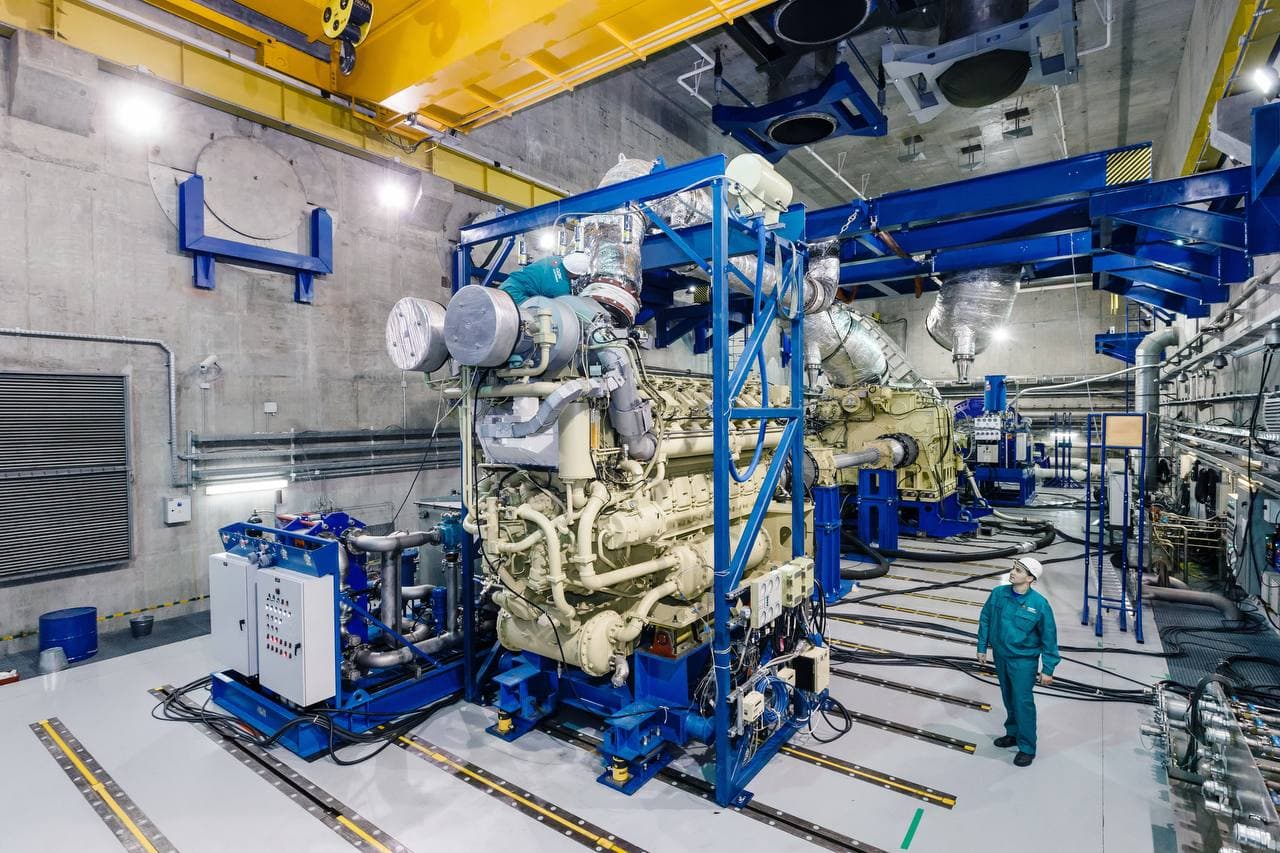
Photo: United Engine Corporation
United Engine Corporation Rostec delivered to the Severnaya Verf Shipyard a diesel-gas turbine unit (DGTU) М55Р for the left shaft line of the third serial frigate "Admiral of the Fleet of the Soviet Union Isakov" of project 22350.
“Since delivered the DGTU is undergoing inspection. In the near future, preparations will begin for the installation of its elements in the bow and stern engine rooms, ”said Igor Orlov, General Director of Severnaya Verf.
The propulsion power plant for the frigate "Admiral of the Fleet of the Soviet Union Isakov", which includes units on the left and right side, will be the second fully domestic, built at Russian facilities within the framework of the import substitution program.
“The DGTU includes a diesel engine, a turbine and a gearbox. The DGTU for the shaft line of the starboard side of Isakov completed bench tests in June and, after completing the necessary documents, will arrive at the shipyard,” said Vladimir Artyakov, First Deputy General Director of Rostec.
Recently, UEC and Severnaya Verf signed a contract to equip two more frigates of the series, Admiral Yumashev and Admiral Spiridonov, with the new DGTU.
Project 22350 frigates are designed to perform a wide range of tasks, including destruction of surface ships, search and destruction of submarines and ground targets, anti-aircraft, anti-submarine and anti-missile defense of ships and vessels, joint actions with amphibious assault forces, patrol service, state border protection, protection of civil ships and production facilities in crisis and dangerous for navigation areas of the World Ocean.
UEC supplied M55R diesel-gas turbine unit to Severnaya Verf
July 6, 2021
Photo: United Engine Corporation
United Engine Corporation Rostec delivered to the Severnaya Verf Shipyard a diesel-gas turbine unit (DGTU) М55Р for the left shaft line of the third serial frigate "Admiral of the Fleet of the Soviet Union Isakov" of project 22350.
“Since delivered the DGTU is undergoing inspection. In the near future, preparations will begin for the installation of its elements in the bow and stern engine rooms, ”said Igor Orlov, General Director of Severnaya Verf.
The propulsion power plant for the frigate "Admiral of the Fleet of the Soviet Union Isakov", which includes units on the left and right side, will be the second fully domestic, built at Russian facilities within the framework of the import substitution program.
“The DGTU includes a diesel engine, a turbine and a gearbox. The DGTU for the shaft line of the starboard side of Isakov completed bench tests in June and, after completing the necessary documents, will arrive at the shipyard,” said Vladimir Artyakov, First Deputy General Director of Rostec.
Recently, UEC and Severnaya Verf signed a contract to equip two more frigates of the series, Admiral Yumashev and Admiral Spiridonov, with the new DGTU.
Project 22350 frigates are designed to perform a wide range of tasks, including destruction of surface ships, search and destruction of submarines and ground targets, anti-aircraft, anti-submarine and anti-missile defense of ships and vessels, joint actions with amphibious assault forces, patrol service, state border protection, protection of civil ships and production facilities in crisis and dangerous for navigation areas of the World Ocean.
Last edited:
You obviously know better than me but what is the reliability of such figures? This info is extremely classified. I want to ask a few more things.In case anyone wants an explanation.
This table lists the maximum detection range of an enemy sub depending on the difference in noise level (in dB) between the target and the passive sonar. It's based on the sonar equation for passive sonar - the source (enemy sub) has to be louder than you by the value in the table (+x dB) and this will give you the maximum range at which you can hear the noise in ideal conditions at sea. Depending on other factors you can hear the enemy sub at a closer distance but not at a greater distance than the one given in the table because acoustic waves won't propagate in water sufficiently for your sensor to pick them up.
View attachment 73791
This next table lists the average approximate noise levels of subs - you have to add 100dB to each value in the table (17dB for Severodvinsk is 117dB)
View attachment 73792
This means that without accounting for sonar gain during the Cold War a Los Angeles sub generating 128dB of noise could hear a Victor II sub generating 165dB of noise at a maximum distance of around 5km. Add a very modest sonar gain of 10dB for the towed array and the distance increases to some 50km. At the same time Victor II can't hear the Los Angeles sub at all because of its own noise level. The kind of one-sided advantage that US submarines held over Soviet subs is not matched by anything during the Cold War era.
Today a Virginia sub (New SSN in the table) generating 110dB of noise will hear a Yasen sub (Severodvinsk in the table) generating 117dB of noise at a maximum distance of somewhere around 50 meters. If we add the same 10dB gain the distance increases to some 500m. With 20dB gain it is 5km. At the same time due to how towed arrays work and thanks to modern processing technology it is possible for Severodvinsk to hear Virginia as long as the sonar gain of its towed array negates that 17dB difference of base noise level. It has to be significantly more though to detect it at sufficient range.
I can't remember the formula now but I think modern towed arrays or sufficiently large conformal arrays can have a theoretical gain of 30-40dB so the maximum detection ranges increase accordingly but obviously the same is true for your opponent. The key here is to hear the enemy before it hears you. The Americans have an advantage but the advantage is no longer sufficient to provide for full comfort of operations.
The reason why it worries USN commanders is that at the end of the Cold War the USN had Los Angeles subs in service and the Improved Los Angeles (San Juan or 688i) was in the process of replacing the Sturgeons. Russian on the other hand only in the late 80s introduced the Akula class (Project 971) which was somewhat comparable to the Los Angeles subs and the first Soviet/Russian sub that was better than the old Sturgeon. Better in this context means "having lower base noise level". Improved Akulas which were better than both 688's and 688i's went into service after the dissolution of the USSR and there were only two of those subs - one Project 971U and one Project 917M.
This means that at the beginning of the 2000s while the USN had altogether 62 Los Angeles and San Juan subs and 3 Seawolfs with the Virginias already in production Russia would have only about 12 Akulas of which only two were better than all US subs except the Seawolf.
With nine Yasen-class subs in production this is going to change because seven of those ships are supposed to enter service by 2024 and then two-three more by 2027-28. That will give Russians between nine and twelve subs which are within 10dB range of the Virginias apart from the new Khabarovsk class which will carry the supertorpedo and might be used for offensive operations. Still an advantage but far from the kind that USN got used to.
The main problem is obviously China which currently is not a threat due to low number of Type 09IIIs and their noise level (see table) but the Huludao shipyard has sufficient capacity to produce at minimum 2 SSNs per year which for China means a minimum rate of net SSN force growth of 20 per decade. While US shipbuilding is currently clogged with 2 Virginias per year taking half of the shipbuilding budget. So it's not just that Russian ships are catching up but that numbers are no longer to be an advantage in early 2030s as projected Chinese and Russian fleets combined will be too close to the size of USN submarine force. Any increase in Chinese SSN production and they'll match USN by 2040.
The question obviously is what the USN is going to do about it because quieter subs are not a solution. They can be as quiet as to bump into each other like the British and French SSBNs did recently. The question is how you find them and that's a separate and complex issue that I won't get into here. But hopefully you have an understanding of the article that most likely even the article's author doesn't have. That tends to be the ironic reality of people writing for money on subjects that they know very little about.
The British claim that Astute can hear an oil tanker from 6000 km away. Is this possible? The Astute needs to 38 dB quieter than the oil tanker we account for a 30 dB sonar gain. 48 if we account for just 20.
What about the later 093s? You can find claims on their parity with Akula or even improved Los Angeles.
Also, it seems the second Yasen is significantly quieter than the first one.
